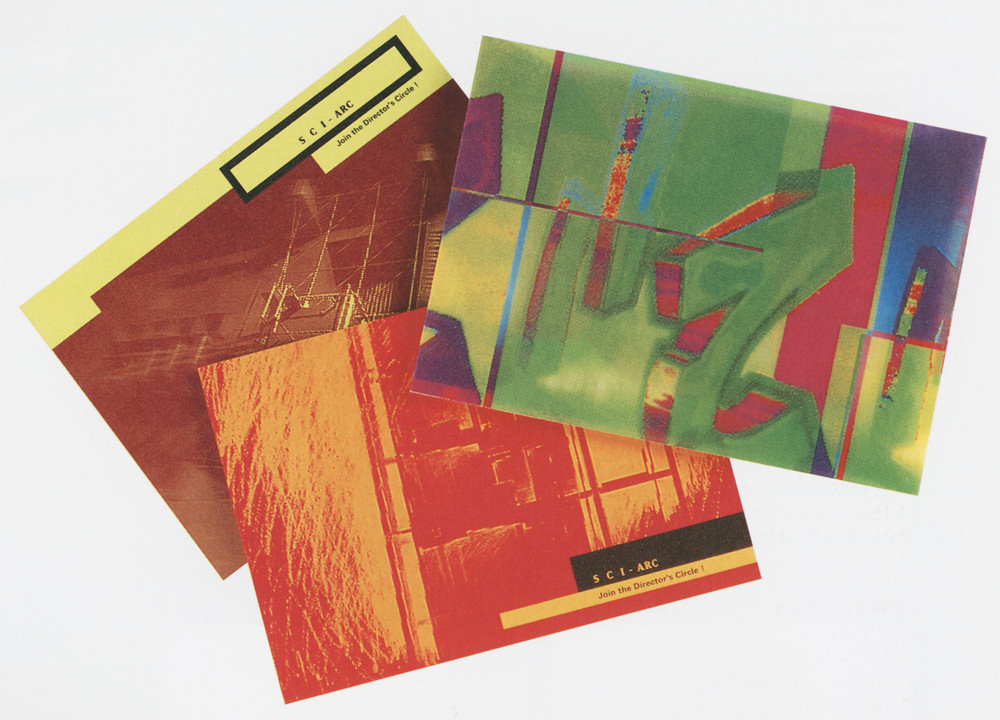SCI-Arc Library Receives Grant from National Endowment for the Arts to Archive Historical Collection
This spring, SCI-Arc received a grant from the National Endowment for the Arts (NEA) for the first stage of a multi-year project to assess, catalog, and archive its extensive physical collection, which consists of 34,270 publications, posters, images, and pieces of ephemera documenting the school’s nearly 50-year history.
The project’s goal is to create a plan for the preservation, organization, rehousing, and accessibility of this collection and will enable SCI-Arc to augment its public online Media Archive—a popular resource that promotes the heritage of contemporary architecture, art, and design.

It also seeks to reframe the perceptions around what is considered to be a crucial moment in the development of late 20th-century architecture, surrounding and related to SCI-Arc’s founding, and reveal a critical piece in the historical narrative of Los Angeles.
In addition to illuminating the personalities and ideas behind the transformation of contemporary architecture in the 70s and 80s, the archiving of SCI-Arc’s collection will also provide unprecedented insight into groundbreaking experiments of graphic design, radical innovations in architecture pedagogy that have since been widely emulated, and the transformation of Los Angeles into a globally influential laboratory for design innovation.
Additionally, many of the print and electronic media in the collection also constitute a survey of the best of Southern California graphic design from the 1970s to the present. From its beginning, SCI-Arc commissioned designers to create public program announcements that reflected the school’s experimental approach in design, materials, and process. Featuring the early work of influential, internationally-known artists at pivotal moments in their careers, these materials contribute to the understanding of the evolution of contemporary graphic design, as well as the active relationship between architectural and graphic experimentation.
In giving broader cultural context to SCI-Arc’s role in Los Angeles’s evolution into one of the world’s most influential design capitals, unearthing and making accessible the SCI-Arc archive will also provide a resource for architecture and design scholars for decades to come.

Over the spring, Bergis Jules, owner and principal of Second Space Archives Consulting (SSAC), conducted an assessment of the condition, arrangement, and storage of SCI-Arc’s physical collection, and to devise a plan for its preservation, organization, rehousing, and accessibility.
SCI-Arc began the first phase of its archiving process by digitizing over 1000 hours of video footage of lectures and presentations delivered since its founding in 1972, which now forms the SCI-Arc Media Archive and is digitally accessible to the public.
“As soon as we digitized the lecture videos eight years ago I knew this was the next step, so I’m delighted to have gotten the ball rolling,” comments McMahon. “And this project is not starting from zero. It builds on the efforts of the students, faculty and staff who produced and preserved mountains of material over SCI-Arc’s history. Without them there wouldn’t be anything to archive.”
The next phase will be to apply for funding from the NEH to support the continuation of this project, which will entail implementing the processing and preservation methods determined by the assessment from the initial phase of research and documentation conducted by Jules and SSAC.
“It will take years to realize,” says McMahon, “but I suspect the result will, like the Media Archive, become a global reference for design discourse.”